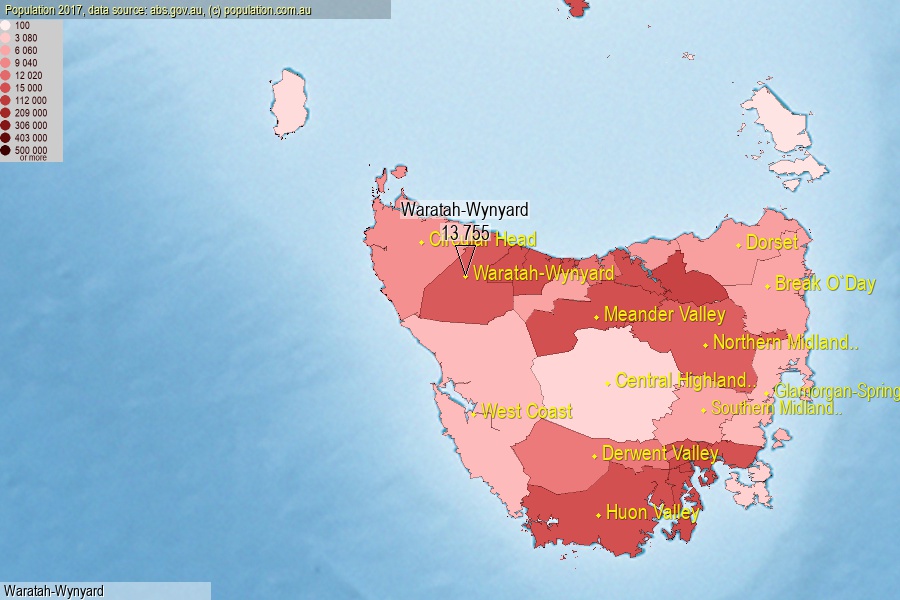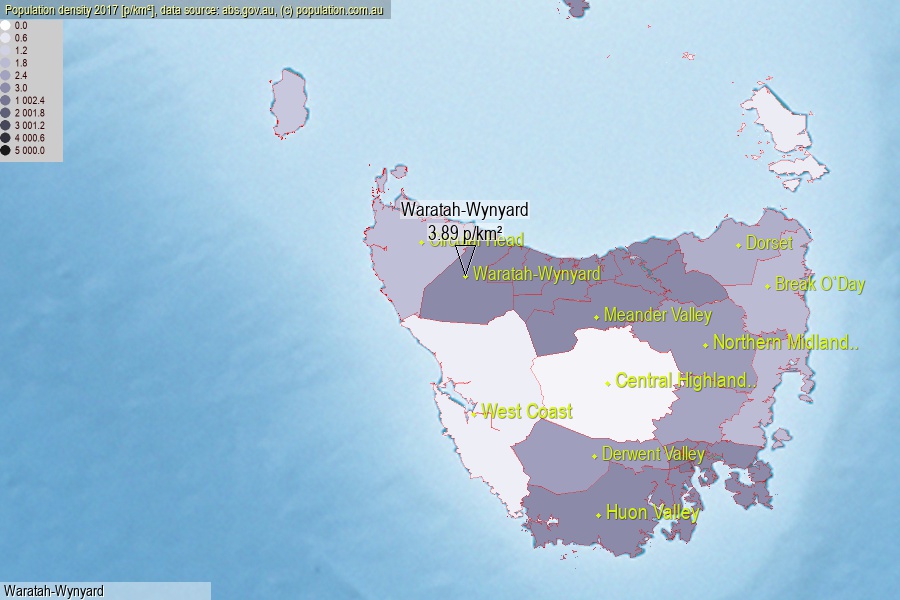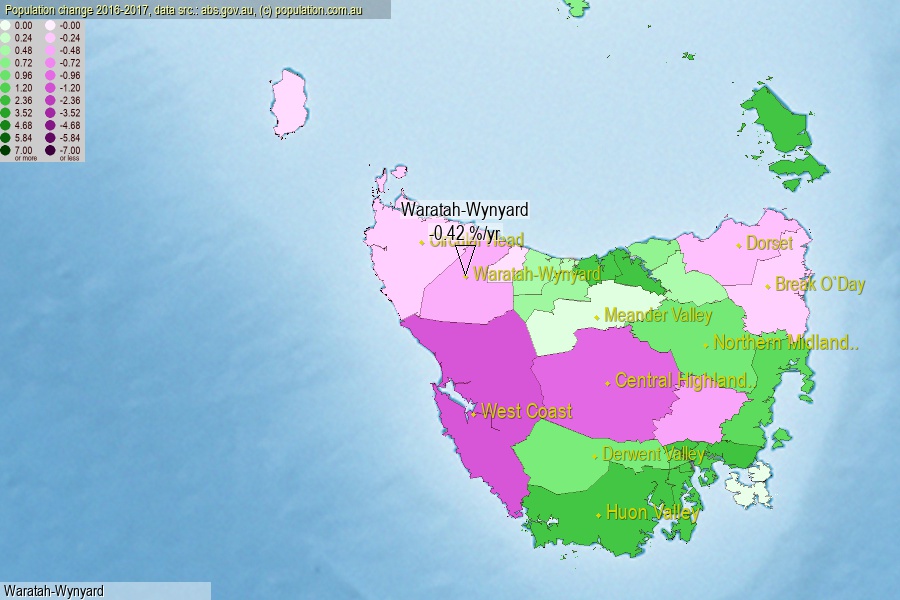 population.com.au
population.com.auLast official estimated population of Waratah-Wynyard Municipality (as Local Government Area) was 13 755 people (on 2017-06-30)[2]. This was 0.06% of total Australian population and 2.612% of TAS population. Area of Waratah-Wynyard is 3 535.90 km², in this year population density was 3.89 p/km² . If population growth rate would be same as in period 2016-2017 (-0.42%/yr), Waratah-Wynyard population in 2025 would be 13 300. [0]



Click to enlarge. Waratah-Wynyard is located in the center of the images.
Population [people], population density [p./km²] and population change [%/year] [2]
[1996-2001] -0.34 %/Y
[2001-2002] -0.28 %/Y
[2002-2003] -0.24 %/Y
[2003-2004] +0.74 %/Y
[2004-2005] -0.27 %/Y
[2005-2006] +1.00 %/Y
[2006-2007] +0.77 %/Y
[2007-2008] +1.27 %/Y
[2008-2009] +0.81 %/Y
[2009-2010] +0.12 %/Y
[2010-2011] -0.06 %/Y
[2011-2012] -0.99 %/Y
[2012-2013] -0.56 %/Y
[2013-2014] -0.49 %/Y
[2014-2015] -0.79 %/Y
[2015-2016] -0.65 %/Y
[2016-2017] -0.42 %/Y
[0] Calculated with linear interpolation from officially estimated population
[1] Read more about LGA and Australian Statistical Geography Standard (ASGS) on abs.gov.au
[2] Population data from Australian Bureau of Statistics (Population and density: 2017; change: 2016-2017)
[3] Digital Boundaries: Australian Statistical Geography Standard (ASGS) 2016.